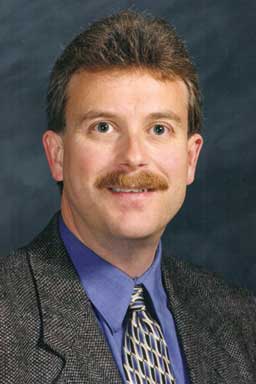The National Animal Health Laboratory Network (NAHLN) was established in 2002 as a result of Homeland Security Presidential Directive #9. This directive specifically directed the USDA to develop a nationwide laboratory network to interconnect state and federal laboratory resources and to standardize laboratory procedures. Initially, 12 state and university diagnostic laboratories were funded to develop capacity and surveillance programs to address eight high-priority foreign animal diseases. These “core” laboratories are dispersed across the country. The NAHLN today includes 60 veterinary diagnostic laboratories of varying capabilities.
The NAHLN is a cooperative agreement between USDA (Animal and Plant Health Inspection Service and the National Institute for Food and Agriculture) and the American Association of Veterinary Laboratory Diagnosticians (AAVLD). The laboratories focus on different diseases but utilize common testing methodologies and share information. The laboratories must be accredited and the personnel must be trained to perform the specific tests required by NAHLN under the coordination of the USDA’s National Veterinary Services Laboratory. The goal is to have a network of laboratories to conduct surveillance and response activities nationwide with the capacity to test large numbers of samples during an animal-health emergency.
The NAHLN has received widespread support from the animal-agriculture community, which realized that detection of and response to an animal-health emergency would hinge on the capabilities of the laboratory system. The ability to continue to move animals and animal products without risking disease transmission to unaffected areas is of paramount importance. Interstate and international movements will depend on a robust diagnostic system. A network of laboratories utilizing standardized and validated diagnostic tests with the capability to expand rapidly to meet testing needs and the ability to seamlessly communicate with each other would be key.
Given the impact the NAHLN will have on the livestock industry’s ability to survive and thrive, it is surprising to me how little involvement animal agriculture has had in the development and strategic planning associated with the network. In my opinion, animal agriculture is the ultimate stakeholder affected by the capabilities of the laboratory system. The direct interaction between the barnyard and the USDA on this issue has not been very good. While USDA has not done a good job reaching out to industry, industry has also not done a good job educating itself. Livestock group leaders have a cursory understanding of the effort to organize the laboratories, but not the potential implications of having a robust laboratory system.
This issue has not risen to the level of focus that I think it should within the livestock community. I think the assumption that it will be there when we need it and will do what it needs to do is short-sighted and unrealistic. We cannot expect laboratory diagnosticians to fully understand the intricacies of today’s modern livestock production systems and the national capacity necessary to ensure business continuity within all facets of animal agriculture. We need to insert ourselves into this process to ensure the network is designed to meet the needs of all its stakeholders.
Every year, the livestock groups include funding for the NAHLN in appropriations requests that we support in the legislature. We recognize that funding is needed, but we’ve never discussed with the NAHLN leadership the long-range plan for the network and what specific projects need attention to achieve the goals of animal agriculture. The fault for this lies with both USDA and the livestock industries.
Recently, however, there has begun to be some recognition of this gap in stakeholder involvement. The NAHLN Steering Committee has been replaced with the NAHLN Coordinating Council, which is made up of state and federal animal-health officials and veterinary diagnostic laboratory representatives. The animal-agriculture industry has no seat on this council due to regulations governing participation in government advisory groups. However, in 2008, the US Animal Health Association (USAHA) and the AAVLD formed a joint special committee to allow for broader stakeholder input through council representation. I currently co-chair this committee, representing USAHA along with Dr Barb Powers representing AAVLD.
While this situation is not perfect, this committee and development of the Coordinating Council have had some effect. Dr Beth Lautner, Coordinating Council co-chair, recently invited a group of animal-agriculture representatives to a strategic planning session in Washington, DC. I believe this 2-day meeting was highly productive and hope it was the beginning of an ongoing spirit of enhanced interaction. I think we provided some degree of perspective from the livestock industries, and we learned what challenges are facing the NAHLN with regard to structure, capabilities, and funding distribution.
In addition, I hope it was the first step to enhancing the level of understanding among the livestock groups of the importance of involvement with NAHLN activities. The NAHLN leadership has a sincere desire to develop the robust interconnected laboratory network that animal agriculture needs to promote and safeguard the health of our industries. While the NAHLN is attempting to enhance its outreach efforts by participating in groups such as the USAHA/AAVLD Special NAHLN Committee and by publishing a quarterly newsletter (http://www.aphis.usda.gov/animal_health/nahln/newsletter.shtml), still more could be done to better inform livestock stakeholders. We also need to continue to insert ourselves into this process and work collaboratively with our laboratory partners to ensure they have the funding and direction to make the network what it needs to be.
-- Harry Snelson, DVM
AASV Director of Communications

